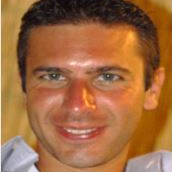Smart Measurement Architectures and Autonomous Sensors: Emerging Techniques, Nonlinear Features, Future Trends
A special issue of Instruments (ISSN 2410-390X).
Deadline for manuscript submissions: closed (30 October 2020) | Viewed by 11241
Special Issue Editor
Interests: sensors; transducers; energy harvesting; MEMS; NEMS; fluxgate magnetometers; green and biodegradable sensors
Special Issues, Collections and Topics in MDPI journals
Special Issue Information
Dear Colleagues,
Recently, there has been an increasing demand for smart measurement architectures and autonomous sensors and transducers. In this context, emerging techniques, the exploitation of nonlinear features in measurement systems, and novel materials/solutions for self-sustained sensors have emerged as prominent research areas and continue to grow at a rapid pace in several branches of science.
In particular, measurement systems based on energy scavengers and “smart” self-powered sensors/transducers have arouse the interest of the international scientific community, with a special emphasis in the areas of measurement, instrumentation, and metrology. Recent efforts to recover energy from the environment and to supply or to sustain measurement architectures have been focused at the macro scale, but also are important at the integrated scale (MEMS, Micro-Electro-Mechanical-Systems) and the nano scale (NEMS, Nano-Electro-Mechanical-Systems).
It is worth noting that several ways to improve the performance and efficiency of measurement architectures and sensors have been explored in the literature, including conversion methods, extraction mechanisms, the exploitation of nonlinearities, novel readouts, and several other intriguing and singular methods.
The purpose of this Special Issue is to publish high-quality research articles as well as reviews that address recent developments, progresses on theories, principles, methodologies of transduction/sensing, and techniques regarding smart measurement architectures and autonomous solutions, in addition to the relevant prospects, opportunities, and challenges in this field.
We welcome submissions on a wide range of topics that include, but are not limited to:
- Self-powered and autonomous or quasi-autonomous sensors;
- Smart solutions in measurements systems;
- Novel methodologies of measurement based on nonlinear behaviors;
- Wake-up solutions and “zero-current” stand-by methods;
- Smart energy harvesting;
- Smart techniques for non-destructive analyses and non-invasive measurements;
- Linear and nonlinear mechanisms and techniques;
- Emerging technologies and methods for energy harvesting;
- Power management and interfaces;
- Low-power conditioning circuits for sensors;
- Nonlinear electro-mechanical transducers;
- The exploitation of complexity in sensors, MEMS, and NEMS;
- Emerging materials and methods for sensing and energy conversions.
Prof. Carlo Trigona
Guest Editor
Manuscript Submission Information
Manuscripts should be submitted online at www.mdpi.com by registering and logging in to this website. Once you are registered, click here to go to the submission form. Manuscripts can be submitted until the deadline. All submissions that pass pre-check are peer-reviewed. Accepted papers will be published continuously in the journal (as soon as accepted) and will be listed together on the special issue website. Research articles, review articles as well as short communications are invited. For planned papers, a title and short abstract (about 100 words) can be sent to the Editorial Office for announcement on this website.
Submitted manuscripts should not have been published previously, nor be under consideration for publication elsewhere (except conference proceedings papers). All manuscripts are thoroughly refereed through a single-blind peer-review process. A guide for authors and other relevant information for submission of manuscripts is available on the Instructions for Authors page. Instruments is an international peer-reviewed open access quarterly journal published by MDPI.
Please visit the Instructions for Authors page before submitting a manuscript. The Article Processing Charge (APC) for publication in this open access journal is 1400 CHF (Swiss Francs). Submitted papers should be well formatted and use good English. Authors may use MDPI's English editing service prior to publication or during author revisions.
Keywords
- autonomous sensors
- smart measurement systems
- smart energy harvesting




